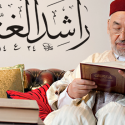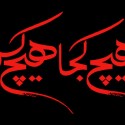The Persistence of ambiguity
Regional and international developments after September 11, 2001, have helped consolidate liberal trends in the Islamist spectrum, both because the movements themselves are not immune to the new discourse about democracy permeating the Arab world and because most authoritarian governments in the region have felt pressure to introduce a modicum of reforms, thus creating greater opportunities for political participation.
Nevertheless, even the most moderate Islamist organizations have not turned their back completely to their ideological beginnings. Within all organizations there remain tensions between the old goals of creating Islamic states and enacting uncompromising versions of the sharia and the new goal of becoming influential players in a pluralistic, democratic system. The outcome of these tensions is a great deal of ambiguity on a number of issues—the gray zones. This ambiguity is manifested both in the rhetorical statements of Islamist organizations and in their political actions. The platforms of legal Islamist parties in Morocco and Jordan, for example, accept political pluralism, but only within the framework of an ill-defined Islamic marji`iyya (framework or reference). The Egyptian Muslim Brotherhood calls for full-fledged democratic reforms but remains reluctant to endorse equal rights for Copts, Egypt’s native Christian minority. Kuwaiti Islamists have been active in the parliament since the 1980s, but the majority worked for many years to block women’s right to vote based on their interpretation of the sharia. The existence of numerous gray zones creates legitimate doubts whether Islamist movements might be advocating democracy for purely instrumental reasons—as a means to gain power in order to create an authoritarian Islamist state. It also provides incumbent regimes that do not want reform with a ready-made excuse to ban the political participation by Islamist organizations, which are their most powerful opponents.
The causes of ambiguity
The persistence of gray zones in the thinking and policies of Islamist movements cannot be dismissed simply as a temporary consequence of the rapid but still incomplete change these movements have been experiencing. Rather, the ambiguity has deeper, more complex roots, including the dual character of these movements as political and religious organizations, the rise of a new generation of activists, and the contradictions of the broader sociopolitical context of the countries where they operate. As a result, there is no guarantee that time will automatically lead to the elimination of the gray zones and that nonviolent Islamic organizations will continue to evolve in a liberal direction. Rather, the outcome is still uncertain, and it will be determined by how the political situation evolves in each country.
Islamist movements are not simply political actors ; they are also religious organizations committed to spreading a body of beliefs and practices. This is particularly true for those movements that are not allowed to form legal political parties and are thus forced to pursue their political role and their religious mission under the same organizational umbrella. As political organizations, Islamist movements face an imperative to be flexible and pragmatic. As religious organizations, however, they are more inclined to use the dogmatic, absolutist language of the preacher and to focus on moral issues of good and evil that do not lend themselves to nuance and democratic bargaining. Responding to the religious imperative, Islamist parliamentarians devote much attention to issues such as separation between the sexes in public spaces or conformity of arts and literature with Islam, sometimes neglecting urgent political and socioeconomic matters. Inevitably, this focus strengthens the reputation of Islamist movements as conservative, even retrograde, forces trapped in illiberal stances regarding women and freedom of expression.
Movements that combine missionary and political activities in one institutional structure take
particularly ambiguous stances for fear of undermining their credibility with either their religious followers or their political constituents. Conscious of the danger of pursuing two conflicting agendas simultaneously, the Moroccan PJD and the Jordanian Islamic Action Front became purely political organizations, leaving religious activities to the Moroccan Reform and Renewal Movement and the Muslim Brotherhood in Morocco and Jordan respectively. The Muslim Brotherhood in Egypt cannot move in a similar direction because the Mubarak regime has made it amply clear that no Islamic party will be allowed to register. In fact, the moderately Islamist and purely political Al-Wasat Party has been denied the right to register several times already. The Brotherhood therefore excludes non-Muslims from its ranks and maintains an overall purely religious structure. Its head is not simply a president or chairman ; he is, rather, al-murshid al-‘amm (general guide), and members of the Brotherhood vie with each other in public to ritually kiss his hand.
Islamist movements harbor different generations of activists, who turned to political activities in different periods and under strikingly different circumstances. Older activists entered politics under conditions of open and even brutal repression. In Egypt, the older generation of Muslim Brothers experienced both the repression of the Nasser regime and the mass arrests that followed President Anwar Sadat’s assassination in 1981. The older generation of Islamist activists in Algeria, Tunisia, and Syria was forced into exile. Not surprisingly, members of this generation tend to be skeptical about the prospects of their movements’ participation in open, legal political activity. Years or even decades of underground activities and constant regime repression have engendered among them a secretive and suspicious mentality, the mirror image of that of the security forces, the mukhabarat, that have been hunting them down. Younger activists grew up politically in a climate that, while by no means free and democratic, afforded them somewhat more political space. As a result, they are more daring in weighing potential strategies and far more eager to play politics by participating in elections. Furthermore, younger activists, understandably resentful of the continuing top-down authoritarian control exercised by their elders within the organizations, have come to favor more participatory internal decision making and, by extension, more participatory politics in general. Some movements have been paralyzed at times by intergenerational tensions, or even split as a result. Both the Egyptian Wasat Party and the Kuwaiti Islamic Constitutional Movement came into being when younger, more liberal activists walked away from rigid organizations that they could not reform. The ideological tensions within some movements are a consequence of these generational power struggles.
The social context also encourages ambiguity. The last three decades have witnessed a conservative turn in many Arab societies, often referred to as the “Islamic Awakening.” Islamist organizations have been both cause and consequence of this Islamic awakening, which was often encouraged by governments seeking to combat the appeal of leftists’ ideas and by religious establishments eager to increase their influence over society. Since the 1970s, the ideas of religious purity and moral politics—in contrast to the corruption of existing regimes—have been part of this awakening. Slogans such as “Islam is the Solution” and “The Quran is our Constitution” have proven effective in mobilizing broad segments of Arab populations. This leaves Islamist organizations in a quandary. To be effective political players, they need to be flexible and pragmatic, as argued by proponents of the liberal trend. But pragmatism can alienate core constituencies that respond to the message of purity and morality. Ambiguity offers these movements a way out of the dilemma.
The persistence of the gray zones is also a reflection of problems that exist in the broader political context. Opposition forces in authoritarian or semiauthoritarian countries have little incentive to take clear-cut positions that could incur the government’s ire. Maintaining ambiguous positions is a defense mechanism used by both Islamist and non-Islamist opposition forces. Furthermore, organizations that are not allowed to participate in the normal politics of their countries have no incentive to continue evolving to adapt to changing circumstances. Tunisian and Algerian Islamists have hardly developed their rhetoric and strategies since the early 1990s. Their ambivalences regarding issues such as pluralism (Tunisian Nahda Party) and renouncing violence (Algerian FIS) are by far greater than in other movements. Frozen in exile, they have degenerated into isolated debating circles and are beginning to lose sight of the changing realities of their societies.




iThere are no comments
Add yours